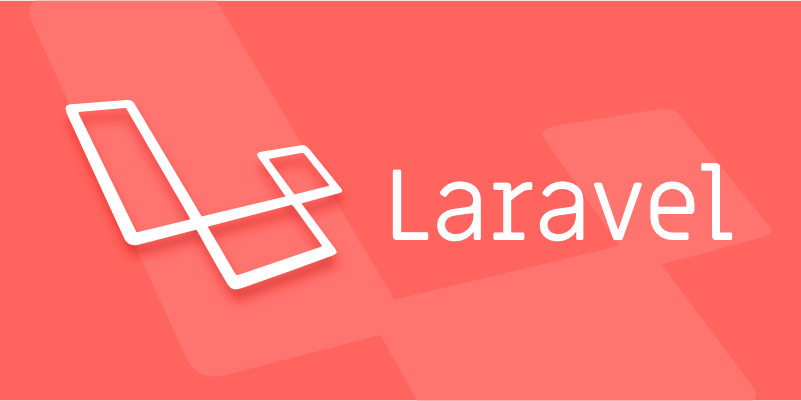Orchestrating multiple jobs with Laravel Queue features
Jul 07, 2025 am 12:55 AMTo manage multiple jobs effectively in Laravel, prioritize queues using Redis, chain jobs for sequential execution, and handle failures gracefully. Use separate queues (high, default, low) with prioritization in the worker command; chain jobs via withChain(), ensuring Redis or sync driver usage and adding catch() callbacks for errors; implement retries, logging, notifications, and unique job IDs to handle and monitor failures; scale efficiently by organizing job classes, using supervisors like Horizon, and setting proper timeouts to avoid bottlenecks.

Laravel’s queue system is a solid tool for managing background jobs, but when you start dealing with multiple jobs—chaining them, prioritizing, or handling failures—you need more structure. Here's how to handle it without overcomplicating things.

Understanding Job Prioritization and Queue Drivers
Not all jobs are equal. Some need to run faster, some can wait. Laravel supports drivers like Redis, Beanstalkd, and database, each with different capabilities. Redis, for example, allows for priority queues natively.

- Use separate queues for different job types (e.g.,
high,default,low) - Set queue priorities in your worker command:
php artisan queue:work --queue=high,default,low - Stick with Redis if you need real-time priority handling; the database driver doesn’t support it as smoothly
This helps avoid mixing fast-response jobs with slower ones. For example, sending a welcome email can be on a lower queue than updating a payment status.
Chaining Jobs for Sequential Execution
Sometimes one job needs to finish before another starts. Laravel provides a simple way to chain jobs using the withChain method.

ProcessOrder::withChain([
new GenerateInvoice,
new SendConfirmationEmail
])->dispatch(new ValidateOrder($order));A few notes:
- Chains only work if you're using the
redisorsyncdriver - If any job in the chain fails, the rest won't run by default
- You can add failure callbacks with
catch()to handle errors gracefully
This works well for workflows like order processing or multi-step imports.
Handling Failures Across Multiple Jobs
When orchestrating several jobs, failure is inevitable. Laravel gives you tools to retry, log, and recover from failed jobs—but you have to plan for it.
- Use the
triesandretry_afterproperties in your job class to control retries - Log failed jobs to a database table using
php artisan queue:failed-tableand track them - Consider unique job IDs or locks if you’re worried about duplicate processing
Also, don’t forget to set up notifications (like Slack or email) via the failed method in your job:
public function failed(\Throwable $exception)
{
\Log::error('Job failed: ' . $exception->getMessage());
// Notify admin or trigger fallback logic here
}It’s not just about catching errors—it’s about making sure the system keeps running even when something goes wrong.
Keeping Things Manageable at Scale
As the number of jobs grows, so does complexity. A few habits help keep things under control:
- Group related jobs into classes with clear names
- Use supervisors or process managers like Horizon if you're using Redis or Beanstalkd
- Monitor queue length and job runtime through logs or built-in tools
One thing people often miss: setting proper timeouts. Both at the queue worker level (--timeout) and within the job itself (public $timeout = 60) can prevent stalled workers and stuck jobs.
That’s basically how you manage multiple jobs effectively in Laravel. It’s not overly complicated, but there are enough moving parts that small oversights can turn into delays or bottlenecks.
The above is the detailed content of Orchestrating multiple jobs with Laravel Queue features. For more information, please follow other related articles on the PHP Chinese website!

Hot AI Tools

Undress AI Tool
Undress images for free

Undresser.AI Undress
AI-powered app for creating realistic nude photos

AI Clothes Remover
Online AI tool for removing clothes from photos.

Clothoff.io
AI clothes remover

Video Face Swap
Swap faces in any video effortlessly with our completely free AI face swap tool!

Hot Article

Hot Tools

Notepad++7.3.1
Easy-to-use and free code editor

SublimeText3 Chinese version
Chinese version, very easy to use

Zend Studio 13.0.1
Powerful PHP integrated development environment

Dreamweaver CS6
Visual web development tools

SublimeText3 Mac version
God-level code editing software (SublimeText3)
 Working with pivot tables in Laravel Many-to-Many relationships
Jul 07, 2025 am 01:06 AM
Working with pivot tables in Laravel Many-to-Many relationships
Jul 07, 2025 am 01:06 AM
ToworkeffectivelywithpivottablesinLaravel,firstaccesspivotdatausingwithPivot()orwithTimestamps(),thenupdateentrieswithupdateExistingPivot(),managerelationshipsviadetach()andsync(),andusecustompivotmodelswhenneeded.1.UsewithPivot()toincludespecificcol
 Strategies for optimizing Laravel application performance
Jul 09, 2025 am 03:00 AM
Strategies for optimizing Laravel application performance
Jul 09, 2025 am 03:00 AM
Laravel performance optimization can improve application efficiency through four core directions. 1. Use the cache mechanism to reduce duplicate queries, store infrequently changing data through Cache::remember() and other methods to reduce database access frequency; 2. Optimize database from the model to query statements, avoid N 1 queries, specifying field queries, adding indexes, paging processing and reading and writing separation, and reduce bottlenecks; 3. Use time-consuming operations such as email sending and file exporting to queue asynchronous processing, use Supervisor to manage workers and set up retry mechanisms; 4. Use middleware and service providers reasonably to avoid complex logic and unnecessary initialization code, and delay loading of services to improve startup efficiency.
 Managing database state for testing in Laravel
Jul 13, 2025 am 03:08 AM
Managing database state for testing in Laravel
Jul 13, 2025 am 03:08 AM
Methods to manage database state in Laravel tests include using RefreshDatabase, selective seeding of data, careful use of transactions, and manual cleaning if necessary. 1. Use RefreshDatabasetrait to automatically migrate the database structure to ensure that each test is based on a clean database; 2. Use specific seeds to fill the necessary data and generate dynamic data in combination with the model factory; 3. Use DatabaseTransactionstrait to roll back the test changes, but pay attention to its limitations; 4. Manually truncate the table or reseed the database when it cannot be automatically cleaned. These methods are flexibly selected according to the type of test and environment to ensure the reliability and efficiency of the test.
 Choosing between Laravel Sanctum and Passport for API authentication
Jul 14, 2025 am 02:35 AM
Choosing between Laravel Sanctum and Passport for API authentication
Jul 14, 2025 am 02:35 AM
LaravelSanctum is suitable for simple, lightweight API certifications such as SPA or mobile applications, while Passport is suitable for scenarios where full OAuth2 functionality is required. 1. Sanctum provides token-based authentication, suitable for first-party clients; 2. Passport supports complex processes such as authorization codes and client credentials, suitable for third-party developers to access; 3. Sanctum installation and configuration are simpler and maintenance costs are low; 4. Passport functions are comprehensive but configuration is complex, suitable for platforms that require fine permission control. When selecting, you should determine whether the OAuth2 feature is required based on the project requirements.
 Implementing Database Transactions in Laravel?
Jul 08, 2025 am 01:02 AM
Implementing Database Transactions in Laravel?
Jul 08, 2025 am 01:02 AM
Laravel simplifies database transaction processing with built-in support. 1. Use the DB::transaction() method to automatically commit or rollback operations to ensure data integrity; 2. Support nested transactions and implement them through savepoints, but it is usually recommended to use a single transaction wrapper to avoid complexity; 3. Provide manual control methods such as beginTransaction(), commit() and rollBack(), suitable for scenarios that require more flexible processing; 4. Best practices include keeping transactions short, only using them when necessary, testing failures, and recording rollback information. Rationally choosing transaction management methods can help improve application reliability and performance.
 Handling HTTP Requests and Responses in Laravel.
Jul 16, 2025 am 03:21 AM
Handling HTTP Requests and Responses in Laravel.
Jul 16, 2025 am 03:21 AM
The core of handling HTTP requests and responses in Laravel is to master the acquisition of request data, response return and file upload. 1. When receiving request data, you can inject the Request instance through type prompts and use input() or magic methods to obtain fields, and combine validate() or form request classes for verification; 2. Return response supports strings, views, JSON, responses with status codes and headers and redirect operations; 3. When processing file uploads, you need to use the file() method and store() to store files. Before uploading, you should verify the file type and size, and the storage path can be saved to the database.
 Generating URLs for Named Routes in Laravel.
Jul 16, 2025 am 02:50 AM
Generating URLs for Named Routes in Laravel.
Jul 16, 2025 am 02:50 AM
The most common way to generate a named route in Laravel is to use the route() helper function, which automatically matches the path based on the route name and handles parameter binding. 1. Pass the route name and parameters in the controller or view, such as route('user.profile',['id'=>1]); 2. When multiple parameters, you only need to pass the array, and the order does not affect the matching, such as route('user.post.show',['id'=>1,'postId'=>10]); 3. Links can be directly embedded in the Blade template, such as viewing information; 4. When optional parameters are not provided, they are not displayed, such as route('user.post',
 Configuring and Using Queue Priorities in Laravel
Jul 08, 2025 am 01:43 AM
Configuring and Using Queue Priorities in Laravel
Jul 08, 2025 am 01:43 AM
Laravel's queue priority is controlled through the startup sequence. The specific steps are: 1. Define multiple queues in the configuration file; 2. Specify the queue priority when starting a worker, such as phpartisanqueue:work--queue=high,default; 3. Use the onQueue() method to specify the queue name when distributing tasks; 4. Use LaravelHorizon and other tools to monitor and manage queue performance. This ensures that high-priority tasks are processed first while maintaining code maintainability and system stability.






